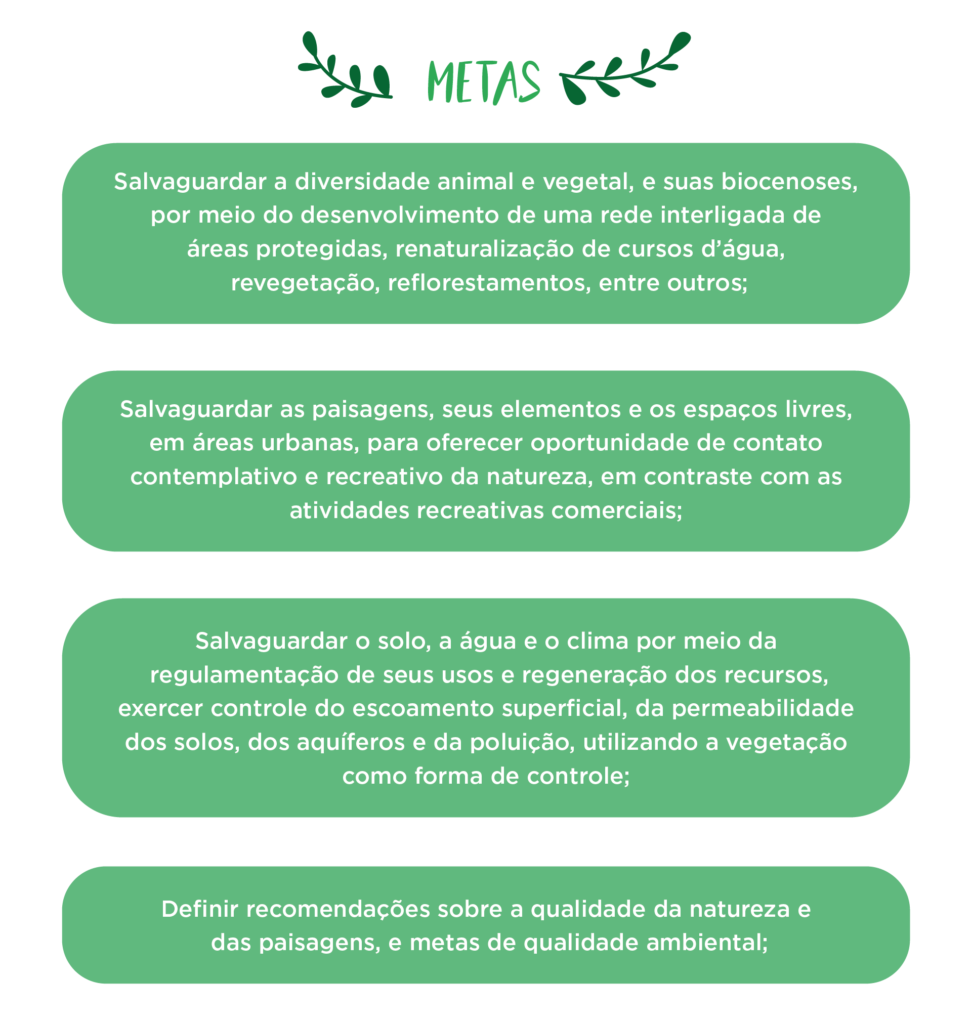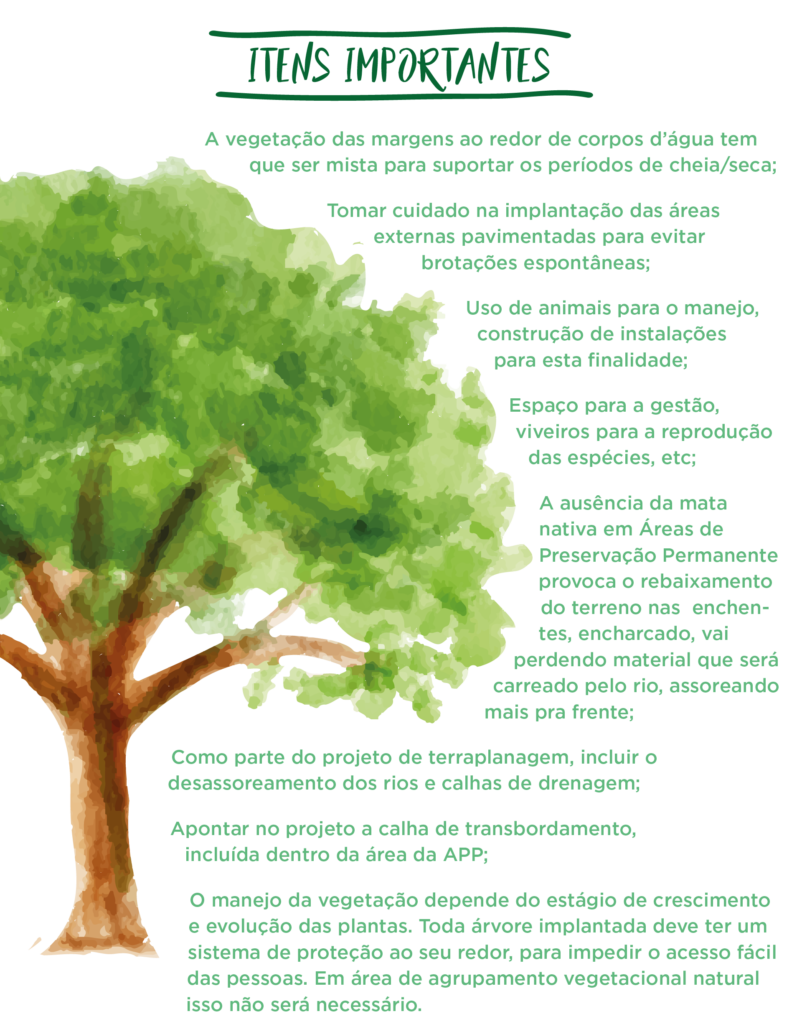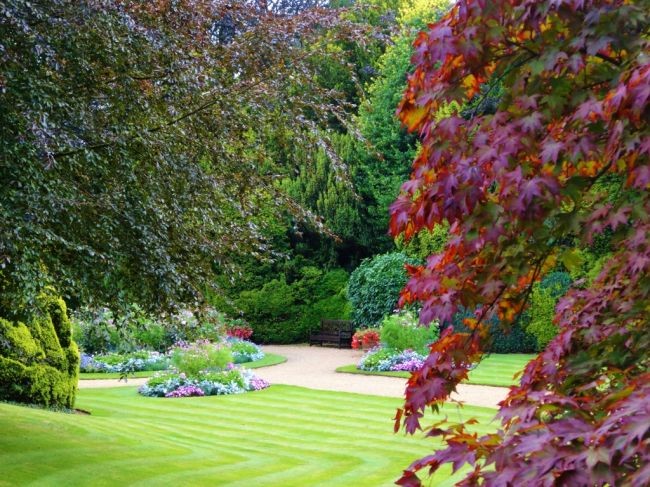A little story
In ancient times, green areas were essentially intended for the use and pleasure of emperors and priests. In Greece, these spaces were expanded not only for walks, but also for meetings and philosophical discussions. In the Middle Ages, green areas were formed inside the courts and then disappear as a result of the growth of cities. In the Renaissance, they transform into gigantic formal sceneries, evolving in Romanticism as urban parks and places of rest and relaxation.
With the emergence of industries and the growth of cities, green spaces ceased to have a function only for leisure, but became an urban necessity, for hygiene, recreation and preservation of the urban environment. Le Corbusier, quoting the Athens Charter: “every residential neighborhood must have the green area necessary for the organization of games and sports for children, adolescents and adults” and that “new green areas must be used for clearly defined purposes: they must contain playgrounds, schools, youth centers or buildings for community use, closely linked to the home ”.
Green spaces in urban centers, in addition to their environmental, health, aesthetic and cultural relevance, are intended for leisure and recreation. Leisure can be conceptualized as being free time, day off, rest, and recreation as being fun, pleasure, pleasant occupation that aims at entertainment.
The Garden Through Time
Mesopotamian Garden, built in artificial elevations (ziggurats), with religious functions and for large celebrations, places of political and religious concentration, with artificial irrigation systems.

Greek Garden, without organized forms, with realistic sculptures of people and animals, natural and functional places, dedicated to the gods, with flowers and fruits, for meetings and philosophical discussions.
Medieval Garden, also known as Jardin de curé, usually on the grounds of an abbey, had the characteristic of mixing flowers and vegetables, medicinal herbs, etc.

Renaissance Garden, appeared in the late 15th century, in Italy, inspired by the classic ideals of order and beauty, intended for contemplation and the enjoyment of the sight, sounds, smells, etc.

Baroque Garden, had the function of feeding the senses and emotion, through decorative and visual effects.
Romantic Garden, originated in England, expresses naturalness, without logical order, sequence of different landscapes, for walks and contemplation.
Contemporary Garden, mixing styles, combining landscaping with architecture, highlighting above all the naturalness of the ecologically balanced environment.
About the Landscape
The idea of Landscape is associated with the human need to configure the notion of the beautiful with the contemplation of nature. The landscape involves a diffuse variety of components, including history, spiritual values, aesthetic meanings, social relations and conceptions of Nature, and as a result of its connection with time, the landscape causes interactions between the present and the past, a kind of memory that stores the history of successive periods of human activity on Earth, and gives individuals a sense of identity.
The Landscape is one of the aspects of the environment, it is what you see, being composed of natural elements (topography, fauna, vegetation) and built. Being a creation of the human mind, it is also associated with interferences that cause creations, utilitarian or simply aesthetic. For the landscaper it is important to understand precisely what the landscape means, this will define not only what he will do for the development of his activities, but mainly what he will say and which direction to follow.
The place of birth of the landscape activity was dealing with the garden, in an attempt to create a protected environment to grow food and essences, but also to bring the natural aesthetic, beautiful par excellence, close to you, so it has an intrinsic hue of social construction, while dependent of human appreciation.
The creation of squares and parks is related to the man’s dream to live in mythical accord with the nature and comes from a long time, it is the story of paradise, told in the Book of Genesis. The image of the space between the walls gained the contours of the place where man can triumph over human fragility and imperfection – from there the idea of the garden was derived as a utopian ideal, which has served, throughout human history, as a model for a better and happier future. This ancestral dream when it gained contours also gained a name: “pairi-dae’za”, a Persian word that simply means “between walls”, and has no meaning for what is within this separate and protected space.
In this way, this space has always meant a structured dream that represents the possibility of recovering the lost paradise – the path to this goal is that of reconciliation with nature, and this reconciliation can only succeed through the sphere of art – this dimension can, once again, make nature beautiful again.
Gardens unite artificial and natural beauty, embracing all elements: water, light, air, growth, making them elements of art.
All efforts devoted to the design of a garden reflect the desire for happiness in harmony with nature – more important than its use as a source of protection, food, medicines and reserve of supplies is its ability to provide moments of pleasant leisure – the of dust every day, the storms and thorns of working days are excluded from this place.
However, no dream place, no fantastic island, can exist without references to reality – it is the challenge to this reality that builds the dream of being able to exist without oppression.
This is where the design and construction of a green area fits, and this is where modern sustainability of the space formed fits in.
Nowadays, there is undoubtedly agreement as to the fact that the principles that govern the organization of these spaces emerge from their physical situation, and this is closely linked to their ecological characteristics.
In recent years, without prejudice to the ecological focus, the world has been discovering, or rediscovering, the landscape, and from it, the natural beautiful, no longer in its conventional sense of shapes, colors and sounds, but seeing beauty in its own diversity from nature. It can be said that, in the current perspective, the beautiful is no longer just an extrinsic perception in favor of an intrinsic perception, which values the “secrets” of nature, the aesthetic appreciation goes from what we see, without great effort (mountains, the green of plants, the vitality of rivers), to what we do not see (ecological relationships, water quality, forest diversity), we only feel intuitively, or only notice with the help of specialists.
The assimilation of this concept has been gaining legitimacy and the valuation of environmental resources – environmental assets – tends to establish a new relationship: society/natural resources, consistent with the production possibilities provided by the advancement of technologies and the consequent mitigation of environmental impacts, the reuse waste as an input for recycling, among others.
The landscape is always a human experience, in that the beautiful is a reality only in the eyes of the beholder. It is still a notion of an anthropocentric character, but it does not lose its value because it does not reject biocentric and ecocentric influences. It is in this last sense that one can speak of beauty in an ecologically balanced environment. For many, the landscape is no longer the relevance of the beauty of a natural fragment and reappears as a holistic attribute of nature itself, of all nature.
In the middle of the 18th century, the notion of rural landscape expands, a more robust appreciation of Nature, to go further and include mountains, deserts and oceans. This movement took on an international dimension at the end of the 19th century, consolidating itself in the 20th century due to the abandonment of city centers in favor of the suburbs, in search of the natural landscape, in this process paradoxically expanding the contrast between urban and rural, as two totally separate entities. In many parts of the world, after 1945, those who lived in cities began to value untouched nature, which is no longer seen as a no-man’s land or a waste of resources, even when not explored in the traditional sense.
It is in the 60s, through the hands of crowds that protested against the abuses and degradations suffered by the Earth, that the landscape definitely gains a central place in the agendas. In this phase, it was no longer just the beautiful “particular” of a mountain or river that mattered, but the beauty of the integrity of the Planet.
But, regardless of the recreation of the landscape, the identification of sets or landscaping elements, or the simple visual recomposition of the surroundings, it is necessary to protect what was created. Landscape protection has thus been a long and unfinished historical process, and needs to be detailed in all circumstances of creation.
The objective of Landscaping carried out with the help of native vegetation, is to monitor the ways in which nature is structured, so that, over time, this vegetation becomes capable of healthy survival, without the costly need of major maintenance, in the various stages of your life.
And by native vegetation we mean the set of plant species that naturally organize themselves to live in certain environments, be they biomes, ecosystems, etc.
And it is also an essential part of the landscape project to pay attention to issues related to the relationship/behavior of people in relation to the implanted vegetation, the ordering of the circulation and occupation processes of the spaces used in the external environment, together with the proper training of the environment for correct adjustment to natural processes and plant development.

Some necessary attentions in the selection of native plant species:
- Species designed to hinder/facilitate circulation.
- Species for the containment of slopes.
- Species for the environmental comfort of people and buildings.
- Species for food cultivation.
- Species for restoring soil cultivation conditions.
- Species for the restoration of the natural environment.



Some basic criteria for the Landscape Project
- Look for biodiversity;
- Make the landscaping project compatible with those of architecture, so that its objectives, functions and forms of use are integrated with those of the building, in order to ensure an effective contribution to its implementation;
- Identify the building’s internal and external activities, and the user, in order to create a comfortable environment;
- Analyze the terrain in terms of its physiographic aspects: soils, surface water, topography, solar orientation, climate and microclimate, rainwater drainage lines;
- Explore the potential of the project area by checking the existing vegetation, its characteristics and size, in order to delimit the areas to be preserved, either by their size or because they are native vegetation or under protection, or another reason;
- Preserve and emphasize the natural topography of the land, taking advantage of its characteristics;
- Protect the project area against rain erosion, maintaining or remaking the natural flow lines, protecting these lines through vegetation or paving, and fixing the unprotected soil;
- Define vegetation and other elements of the project according to the environmental requirements of the various internal and external areas, contributing to the comfort of users: light control, shading, wind barrier, air humidification, sound barrier and others;
- Define solutions always in accordance with the use of the area, respecting any particular conditions of the sick, disabled, children, the elderly and others, avoiding, in general, the use of aggressive species, with poisonous spines or with bulky and heavy fruits, in areas of public flow or permanence;
- Respect the size of adult tree species, establishing adequate spacing and thus avoiding deforming pruning and the need to cut trees that endanger the safety of buildings;
- Rationalize the specification of the built elements, standardizing the equipment, external furniture, floors, sealing elements and others;
- Consider the need for complementary lighting, drainage and irrigation projects;
- Location of plant species seedlings in nearby environments. The choice of vegetation must consider the maintenance conditions, the species that may exist in the surroundings, as well as their adaptation to the conditions of the soil, climate and characteristics of use.
The Landscape Planning
It is a theory of planning that incorporates the assessment of the potential (limits and aptitudes) of nature and its landscape, in urbanized areas or not, to accommodate human uses.
It is an instrument for the protection and development of nature with the aim of safeguarding the capacity of ecosystems and the recreational potential of the landscape, as fundamental parts of human life.

Goals
- Safeguard animal and plant diversity, and its biocenoses, through the development of an interconnected network of protected areas, renaturalization of water courses, revegetation, reforestation, among others;
- Safeguard the landscapes, their elements and free spaces, in urban areas, to offer opportunities for contemplative and recreational contact with nature, in contrast to commercial recreational activities;
- Safeguard the soil, water and climate by regulating their uses and regenerating resources, exercise control of surface runoff, soil permeability, aquifers and pollution, using vegetation as a form of control;
- Define recommendations on the quality of nature and landscapes, and environmental quality goals;

Important items
- The vegetation of the margins around bodies of water has to be mixed to withstand periods of flood/drought;
- Be careful in the implantation of paved external areas to avoid spontaneous sprouts;
- Use of animals for management, construction of facilities for this purpose;
- Space for management, nurseries for the reproduction of species, etc;
- The absence of native forest in Permanent Preservation Areas causes the land to be lowered in floods, drenched, it loses material that will be carried by the river, silting up ahead;
- As part of the earthwork project, include the silting up of rivers and drainage channels;
- Point out the overflow chute in the project, included within the PPA area;
- The management of vegetation depends on the growth and evolution stage of the plants. Every tree implanted must have a protection system around it, to prevent easy access by people. In an area of natural vegetation grouping this will not be necessary.
Conclusion
Landscape work should be based on naturalistic approaches to gardening, with the use of perennial plant varieties, in the universe of native species.
Taking architectural design as a suggestion, the seasonal life cycle of a plant is prioritized over decorative considerations such as flower or color. It mainly focuses on structural characteristics, such as the shape of leaves or seeds, present before and after the plant has flowered.
A garden is exciting when it looks good all the time, not just at particular times.
The stability of perennial plants after planting is essential, especially with the use of mixtures of species, forming long-lasting clusters, due to the change in aesthetic perspectives to another formed by ecology. The result is gardens that persist for years after planting.
“Close your eyes, prick your ears, and from the softest sound to the wildest noise, from the simplest tone to the highest harmony, from the most violent, passionate scream to the gentlest words of sweet reason, it is by Nature who speaks, revealing her being, her power, her life, and her relatedness so that a blind person, to whom the infinitely visible world is denied, can grasp an infinite vitality in what can be heard.”
Johann Goethe

This article was written by the landscaper Carlos Oliveira Perna.
Erechim – May 1, 2020









